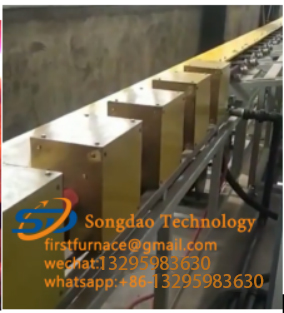- 24
- Mar
Performance after induction case hardening
Performance after induction case hardening
1. Surface hardness: The surface hardness of workpieces subjected to high and medium frequency induction heating surface quenching is often 2 to 3 units (HRC) higher than ordinary quenching.
2. Wear resistance: The wear resistance of the workpiece after high frequency quenching is higher than that of ordinary quenching. This is mainly due to the combined results of fine martensite grains in the hardened layer, high carbide dispersion, relatively high hardness, and high compressive stress on the surface.
3. Fatigue strength: high and medium frequency surface quenching greatly improves the fatigue strength and reduces the notch sensitivity. For workpieces of the same material, the depth of the hardened layer is within a certain range, and the fatigue strength increases with the increase of the depth of the hardened layer, but when the depth of the hardened layer is too deep, the surface layer is compressive stress, so the increase in the depth of the hardened layer reduces the fatigue strength and makes the workpiece. Brittleness increases. General hardened layer depth δ = (10 ~ 20)% D. more suitable, where D. is the effective diameter of the workpiece.

